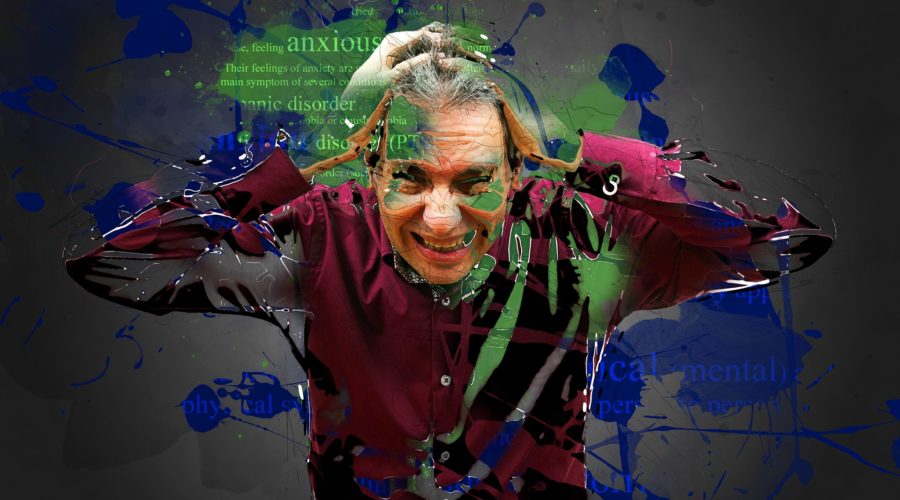What Does Anxiety Feel Like?
Many people believe that anxiety is all in our head. Hint: It’s not. But what does anxiety feel like? And what can you do to help relieve side effects of anxiety? Dr. Jonathann Kuo from Hudson Mind — an Integrative Health Clinic in New York City — offers some help.
According to the National Alliance on Mental Illness, an estimated 48 million adults live with an anxiety disorder. Often categorized as mental and emotional obstacles, anxiety can take control of the entire body. Sometimes, anxiety lives in the body long after anxious emotions and ruminating thoughts seem to have dissipated.
As awareness of chronic anxiety grows, so, too, does the proliferation of available treatments. More traditional treatments for chronic anxiety tend to focus on mental and emotional responses to worry and stress. Cognitive behavioral therapy can help to reframe anxious thought patterns, and practicing mindfulness can stop rumination in its tracks by bringing thoughts back to the present moment. While these techniques have proven invaluable for many, some people with chronic anxiety need physical support.
The physical implications of anxiety were formerly treated as afterthoughts to the mental and emotional implications. But the impact of anxiety can actually manifest in physical changes, much like injuries to the body.
Thanks to advancements in treatments, like the Dual Sympathetic Block at Hudson Mind, we no longer have to battle the physical side effects of anxiety on our own. Before digging into some of the physical side effects, it might be helpful to take a moment to understand why, or how, physical reactions can accompany feelings of unease.
RELATED: Breathwork Training – How To Follow Proper Technique During Meditation
The Chain Reaction of Anxiety
When a stressful event arises in our lives, our bodies instinctively react. The autonomic nervous system kicks into fight-or-flight mode and releases hormones, like adrenaline, as a means of helping our bodies fight past or flee from this perceived danger on the horizon. Boosted by this rush of adrenaline, heart rates increase, our blood pressure spikes, and, sometimes, hypervigilance sweeps over the senses. This is due to more oxygen being pumped to the brain.
In certain scenarios, the mechanics of the autonomic nervous system’s stress response are lifesaving, but in others (ones where our lives are not actually in physical or immediate danger), they can be a hindrance.
Modern life can feel like a landmine of stress triggers — from climate change to financial stress, and the seemingly infinite loop of living and working online. With unrelenting stress at the center of it all, our bodies can operate at a heightened fight-or-flight state without any respite. This makes symptoms of anxiety hard to untangle.
What Does Anxiety Feel Like: The Physical Side Effects
What does anxiety feel like for people with chronic anxiety? Bluntly, it can feel like they are no longer in control of their thoughts. Excessive worry and rumination can hijack the brain — which makes it difficult to stop an anxiety spiral in its tracks.
The same goes for the physical side effects of anxiety. When unchecked, these reactions to fear and worry can run the show.
To help better understand chronic anxiety and the physical side effects, here are a few things to monitor.
- Racing Heart. You’re not imagining it. In moments of intense anxiety, the adrenaline that is released through the sympathetic system’s alarm response actually causes the heart to work harder. When this happens, the heart beats faster than normal due to an increase in blood flow to vital organs.
- Insomnia. Millions of people already struggle with sleep each night, and additional stress hormones don’t help. If it feels like you’ve downed two espressos right before bed, you may actually be feeling the effects of adrenaline rushing through your system.
- Difficulty Concentrating. Trouble focusing is frequently reported among individuals living with an anxiety disorder, because excessive worry hinders working memory and makes it difficult to reason in real time.
- Shaking. Shaking is another stress hormone byproduct. The release of stress hormones may activate muscles in the body — sometimes tensing them in preparation for fighting or fleeing. This muscular tension can culminate in shaking episodes, which can last anywhere from a few seconds to a few minutes.
- Sensitive Startle Response. Do you find yourself feeling constantly on-guard or sensitive to the slightest movement or noise? Anxiety may be increasing your startle sensitivity, causing your body to instinctively expect more threats to pop up.
- Muscle Tightness. Similar to the above, the body may also instinctively respond to perceived threats and tense up. In instances of prolonged anxiety, muscles may remain contracted for hours, if not days. This can lead to back pain, tension headaches, and, even, digestive issues.
How To Soothe The Physical Side Effects Of Anxiety
There is no one-size-fits-all solution for managing anxiety, as anxiety feels different to everyone. While each person is different, Hudson Mind’s Dual Sympathetic Block may be an option worth exploring. Targeting the physical side effects of anxiety by resetting the fight-or-flight system, it allows the body a chance to relax after long periods of stress.
But if we ignore the physical side effects, life can become more difficult to manage. Recognizing the body’s physical responses to anxiety may encourage people to seek support and treatment sooner.



